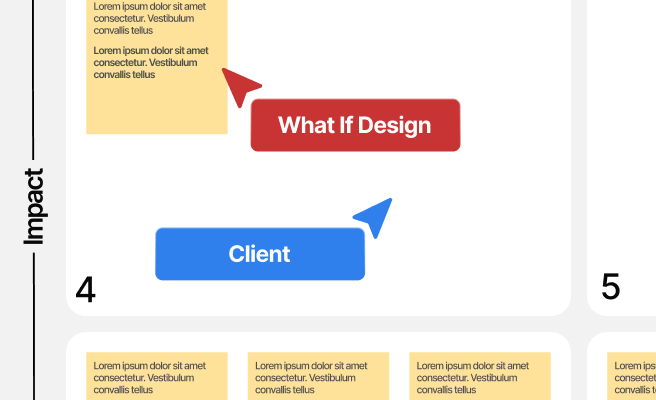Experience Mapping
<p>Experience mapping is a strategic process used to visualize and understand the entire journey a user or customer undertakes while interacting with a product, service, or organization. It provides a comprehensive view of the user's experiences, highlighting pain points, emotions, and interactions across different touchpoints.</p>
<p>Traditionally rooted in the field of UX design, experience mapping has grown to encompass various disciplines, enabling organizations to create user-centric products and services. It generalizes the concept of customer-journey maps across different user types and products, making it a versatile tool for enhancing user experience (source: <a href="https://www.nngroup.com/articles/ux-mapping-cheat-sheet/" style="color: #2896FF; text-decoration: underline;">Nielsen Norman Group</a>).</p>
<p>An experience map typically includes several key components:</p>
<ul>
<li><strong>Persona:</strong> A representation of the generic user who experiences the journey.</li>
<li><strong>Phases:</strong> The different stages the user goes through during their interaction.</li>
<li><strong>Touchpoints:</strong> Points where the user interacts with the product or service.</li>
<li><strong>Actions:</strong> Steps taken by the user at each touchpoint.</li>
<li><strong>Emotions:</strong> The user's feelings throughout the journey.</li>
<li><strong>Pain Points:</strong> Challenges or issues encountered by the user.</li>
<li><strong>Opportunities:</strong> Areas for improvement or innovation.</li>
</ul>
<p>Experience mapping is crucial for climate tech companies aiming to create user-centric solutions that address environmental challenges. For instance, a company developing a carbon capture technology might use experience mapping to understand how industrial clients interact with their system, identifying pain points in the installation or maintenance process and opportunities to enhance user satisfaction.</p>
<h2>Importance of Experience Mapping</h2>
<p>Experience mapping is more than just a visualization tool; it is a strategic asset that helps organizations:</p>
<ul>
<li><strong>Identify Pain Points:</strong> By mapping out the entire user journey, organizations can pinpoint specific areas where users face difficulties, allowing them to address these challenges effectively.</li>
<li><strong>Enhance User Satisfaction:</strong> Understanding emotions and interactions at various touchpoints enables companies to improve the overall user experience, leading to higher satisfaction and loyalty.</li>
<li><strong>Drive Innovation:</strong> Highlighting opportunities for improvement fosters innovation, helping companies develop new features or services that meet user needs more effectively.</li>
<li><strong>Align Teams:</strong> Experience maps provide a shared understanding of the user journey, aligning teams across the organization towards common goals and strategies.</li>
</ul>
<h3>Case Study: Climate Tech Example</h3>
<p>Consider a climate tech company specializing in green manufacturing solutions. By creating an experience map, the company can visualize the journey of a manufacturing plant manager from the initial research phase through the implementation and ongoing use of their green technology. This map might reveal pain points such as the complexity of initial setup and the need for more intuitive user interfaces, leading to actionable insights for product improvement.</p>
<h2>Creating an Experience Map</h2>
<p>Creating an experience map involves several steps:</p>
<ol>
<li><strong>Define Objectives:</strong> Clearly outline the goals of the experience mapping exercise. What do you hope to achieve? Which user journey are you focusing on?</li>
<li><strong>Gather Data:</strong> Collect qualitative and quantitative data from user interviews, surveys, and analytics. This data forms the foundation of your experience map.</li>
<li><strong>Create Personas:</strong> Develop personas representing your target users. These personas should include demographic information, goals, and challenges.</li>
<li><strong>Identify Phases:</strong> Break down the user journey into distinct phases. For example, awareness, consideration, purchase, and post-purchase.</li>
<li><strong>Map Touchpoints:</strong> Identify all touchpoints where users interact with your product or service during each phase.</li>
<li><strong>Document Actions and Emotions:</strong> Detail the actions users take and their emotional responses at each touchpoint. Highlight pain points and areas of friction.</li>
<li><strong>Identify Opportunities:</strong> Look for opportunities to improve the user experience. Consider how you can address pain points and enhance positive interactions.</li>
<li><strong>Visualize the Map:</strong> Use tools like [Miro](https://miro.com) or [Lucidchart](https://lucidchart.com) to create a visual representation of your experience map.</li>
</ol>
<h2>Conclusion</h2>
<p>Experience mapping is a powerful tool for organizations looking to create user-centric products and services. By visualizing the entire user journey, companies can identify pain points, drive innovation, and enhance user satisfaction. For climate tech companies, experience mapping offers a strategic advantage by aligning solutions with user needs and environmental goals.</p> <p>To understand the power of design across industries and sectors, view our diverse portfolio of works. <a href="https://www.whatifdesign.co/work" style="color:#2896FF; text-decoration:underline;">View our portfolio</a>.</p> <p>Increase user engagement that converts your demos into sales. Optimise your UX strategies with our audits.
<p>Fill out the <a href="https://tally.so/r/n97pxQ" style="color:#2896FF; text-decoration:underline;">UX Audit form</a> to get started. Ready to discuss your needs? <a href="https://cal.com/akhilak/what-if-design?duration=25" style="color:#2896FF; text-decoration:underline;">Book a consultation call</a> with us today.</p></p>

Let's scale your impact with great design.
Free consultation, no sales pitch
Thank you! Your submission has been received!
Oops! Something went wrong while submitting the form.
Let’s talk
Nothing great is built alone.
Let’s connect about your vision, our work and how we can collaborate.
Get in touch

